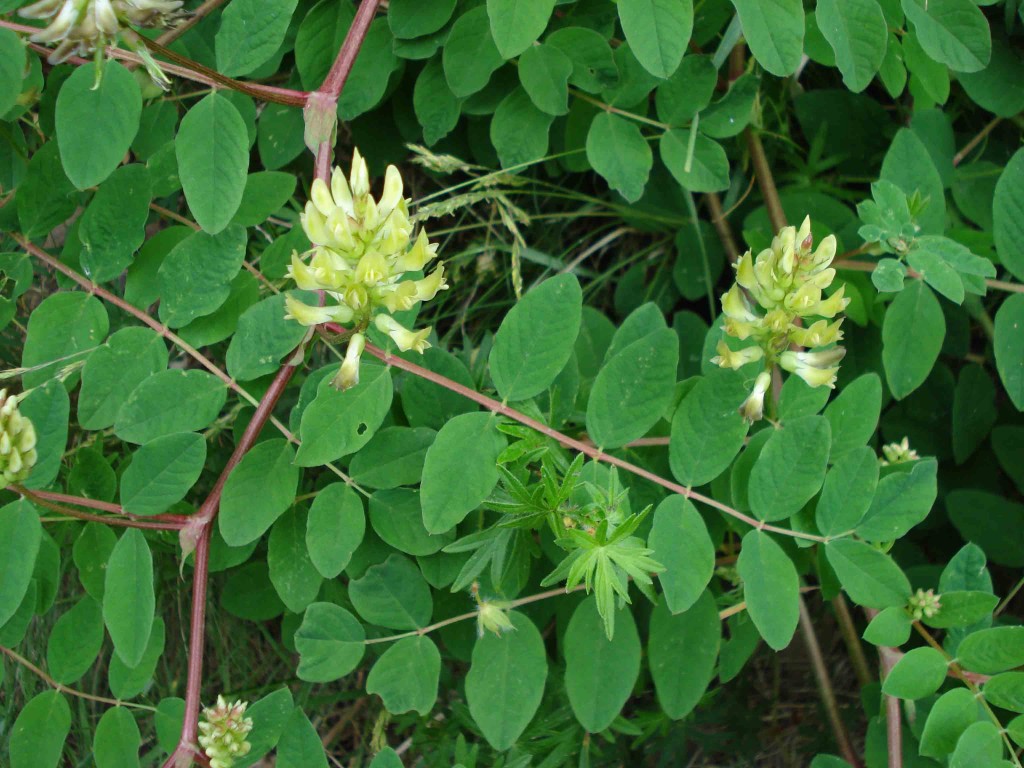Astragalus kirpicznikovii: Red Data Book of Armenia

EN B 1 ab(i,ii,iii,iv) + 2 ab(i,ii,iii,iv)
Category. Endangered species. Endemic of Transcaucasia. The extent of occurrence is less than 5000 km2, the area of occupancy is less than 500 km2. The species grows in the zone of intensive agricultural activities. It was included in the first edition of the Red Data Book of Armenia under Category 2: Rare species. It is not included in the Annexes of CITES and that of the Bern Convention.
Description. Perennial stemless plant, covered with simple hairs. Leaves imparipinnate, 8–35 mm long; leaflets 8–21–paired, glabrous from above, pubescent from beneath, elliptical, 5–20 x 2–10 mm. Peduncles 0,5–1 cm long. Raceme few–flowered, shortened, fasciculate. Corolla yellow; flag 18–23 mm long. Style under stigma glabrous. Legumes 10–20 cm long, covered with long squarrose hairs.
Distribution. In Armenia it occurs in Zangezur (surroundings of Angeghakot village, between Goris city and the village Tegh) and Meghri (between the villages Shvanidzor and Nyuvadi) floristic regions. EOO is 1460 km2, AOO is 16 km2, the number of locations is 4. Besides Armenia the species grows in East Transcaucasia, West Iran.
Ecological, biological and phytocoenological peculiarities. Grows in lower and middle mountain belts, at the altitudes of 650–1850 meters above sea level, on dry stony slopes, among shrubs, in open juniper forest and phryganoid vegetation. Flowering from April to May, fruiting from May to June.
Limiting factors. Restricted extent of occurrence and area of occupancy, loss/degradation of habitats caused by land development and grazing.
Conservation actions. No conservation actions. Necessary: survey on population numbers and range, search of new habitats, monitoring of the state of the population.
Suggestions
 The Ministry of Environment sent a letter international partners to draw their attention to the real danger of environmental disasters as a result of Azerbaijan's large-scale aggression towards the territory of Armenia
The Ministry of Environment sent a letter international partners to draw their attention to the real danger of environmental disasters as a result of Azerbaijan's large-scale aggression towards the territory of Armenia
 Vicia pisiformis: Red Data Book of Armenia
Vicia pisiformis: Red Data Book of Armenia
 Vavilovia formosa: Red Data Book of Armenia
Vavilovia formosa: Red Data Book of Armenia
 Trigonella capitata: Red Data Book of Armenia
Trigonella capitata: Red Data Book of Armenia
 Trigonella astroides: Red Data Book of Armenia
Trigonella astroides: Red Data Book of Armenia












